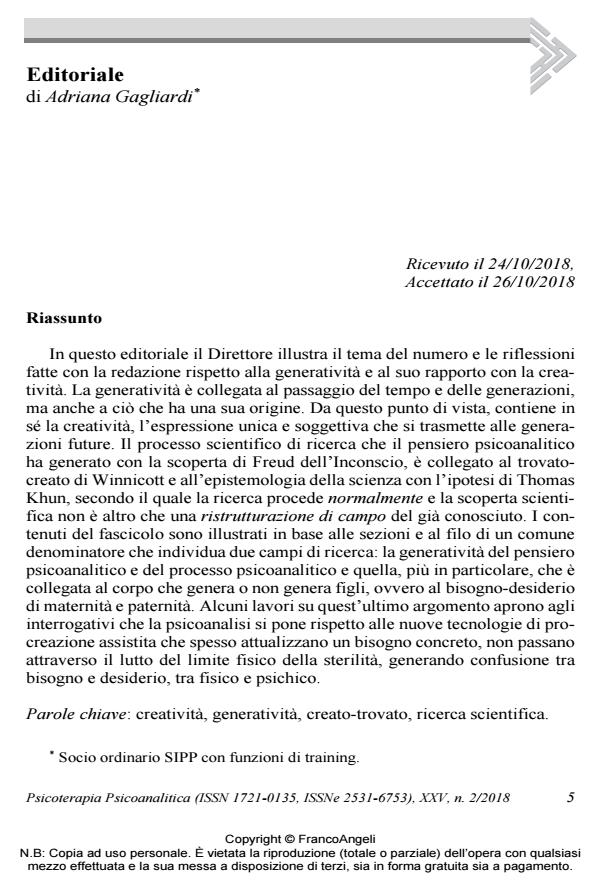Editorial
Journal title PSICOTERAPIA PSICOANALITICA
Author/s Adriana Gagliardi
Publishing Year 2018 Issue 2018/2
Language Italian Pages 7 P. 5-11 File size 165 KB
DOI 10.3280/PSP2018-002001
DOI is like a bar code for intellectual property: to have more infomation
click here

FrancoAngeli is member of Publishers International Linking Association, Inc (PILA), a not-for-profit association which run the CrossRef service enabling links to and from online scholarly content.
In this editorial the Director illustrates the theme of the number and the reflections made with the editorial board on generativity and its relationship with creativity. Generativity is connected to the passage of time and of generations, but also to what has its own origin. From this point of view, it contains creativity, the unique and subjective expression that is transmitted to future generations. The scientific research process that psychoanalytic thought has generated with Freud’s discovery of the Unconscious is connected to Winnicott’s found-created and to the epistemology of science with the hypothesis of Thomas Khun, according to which research proceeds normally and scientific discovery is nothing but a restructuring of the field of the already known. The contents of the issue are illustrated according to the sections and the thread of a common denominator that identifies two fields of research: the generativity of psychoanalytic thought and psychoanalytic process and the one, more particularly, that is connected to the body that generates or does not generate children, that is the need-desire for motherhood and fatherhood. Some works on this last topic open to the questions that psychoanalysis poses about new technologies of assisted procreation that often actualize a concrete need, do not pass through the mourning of the physical limit of infertility, and so generate confusion between need and desire, between physical and psychic.
Keywords: Creativity, generativity, created-found, scientific research.
Adriana Gagliardi, Editoriale in "PSICOTERAPIA PSICOANALITICA" 2/2018, pp 5-11, DOI: 10.3280/PSP2018-002001